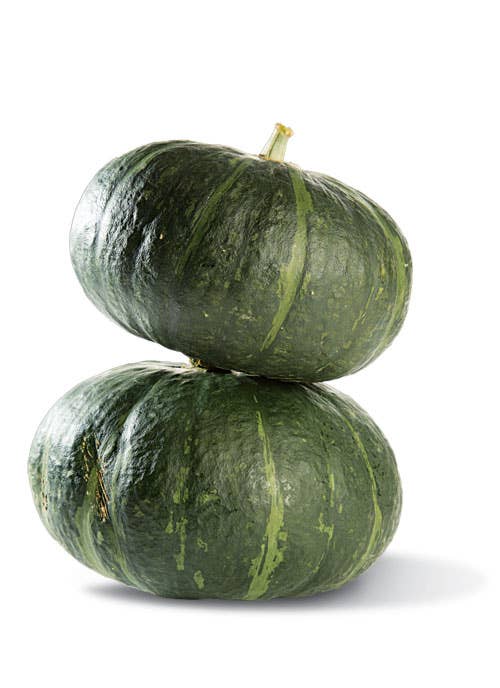
Pumpkin Picking
When it comes to making pumpkin pie, as food historian Sandra Oliver points out in her story Home Slice, not all of the variously colored and shaped pumpkins, gourds, and squashes available at this time of year are created equal. We were eager to see which ones work best, so we asked John Ackerman, who grows more than 160 varieties on Ackerman Farms in Morton, Illinois, to send us his most pie-friendly varieties—all of which can be found at farmers' markets and at Whole Foods around the country.
Dickinson
Dickinson, a beige, football-shaped variety, is the kind that’s typically canned. It has very firm, deep-orange flesh that makes a puree with a wonderful, honeyed flavor. A particularly moist variety, once roasted and pureed, it should be sauteed for about five minutes over high heat to cook off excess moisture.
Long Neck
Long neck, named for its swan-like arc, outwardly resembles the butternut squash, but the soft, cantaloupe-colored flesh, less sweet than butternut’s and far more fibrous, requires longer pureeing than some other varieties.
Winter Luxury Pie
Small, spherical winter luxury pie has a distinctive lacy webbing on its skin, and flesh similar in texture to an acorn squash’s, though not as sweet in flavor. It makes a wonderfully silky pie filling, but take care not to over-puree it.
Acorn Squash
Diminutive, dark green- and orange-skinned acorn squash, a variety found in most supermarkets at this time of year, has tender golden flesh that makes a candy-sweet, creamy puree with a similar texture to that of pureed cooked carrots.
Jarrahdale
Round and ridged like the iconic jack–o’–lantern, only with skin an otherworldly shade of gray-green, jarrahdale has tough orange flesh that makes a puree as sweet and luscious as mashed sweet potatoes. This variety also has an abundance of seeds that are terrific for roasting; toss them with a neutral-tasting oil, a little salt, and any spices you like, and roast on a baking sheet at 350 degrees until crisp, about 15 minutes.
Pink Banana
Pink banana, as the name would suggest, is a long, narrow variety with pale, rosy-colored skin, and its soft, gently sweet, apricot-colored flesh is similar in consistency to a mashed banana’s when roasted and pureed. Once baked in a crust along with cream, eggs, and the other pumpkin pie ingredients, it makes an especially dense filling with a concentrated, caramelized sweetness.
Cheddar Cheese
Buff-colored, with a squat, flattened form like a wheel of cheese, cheddar cheese has vivid orange flesh. Like the dickinson variety, once roasted and pureed, this pumpkin must be cooked further to eliminate excess moisture.
Keep Reading
Continue to Next Story










